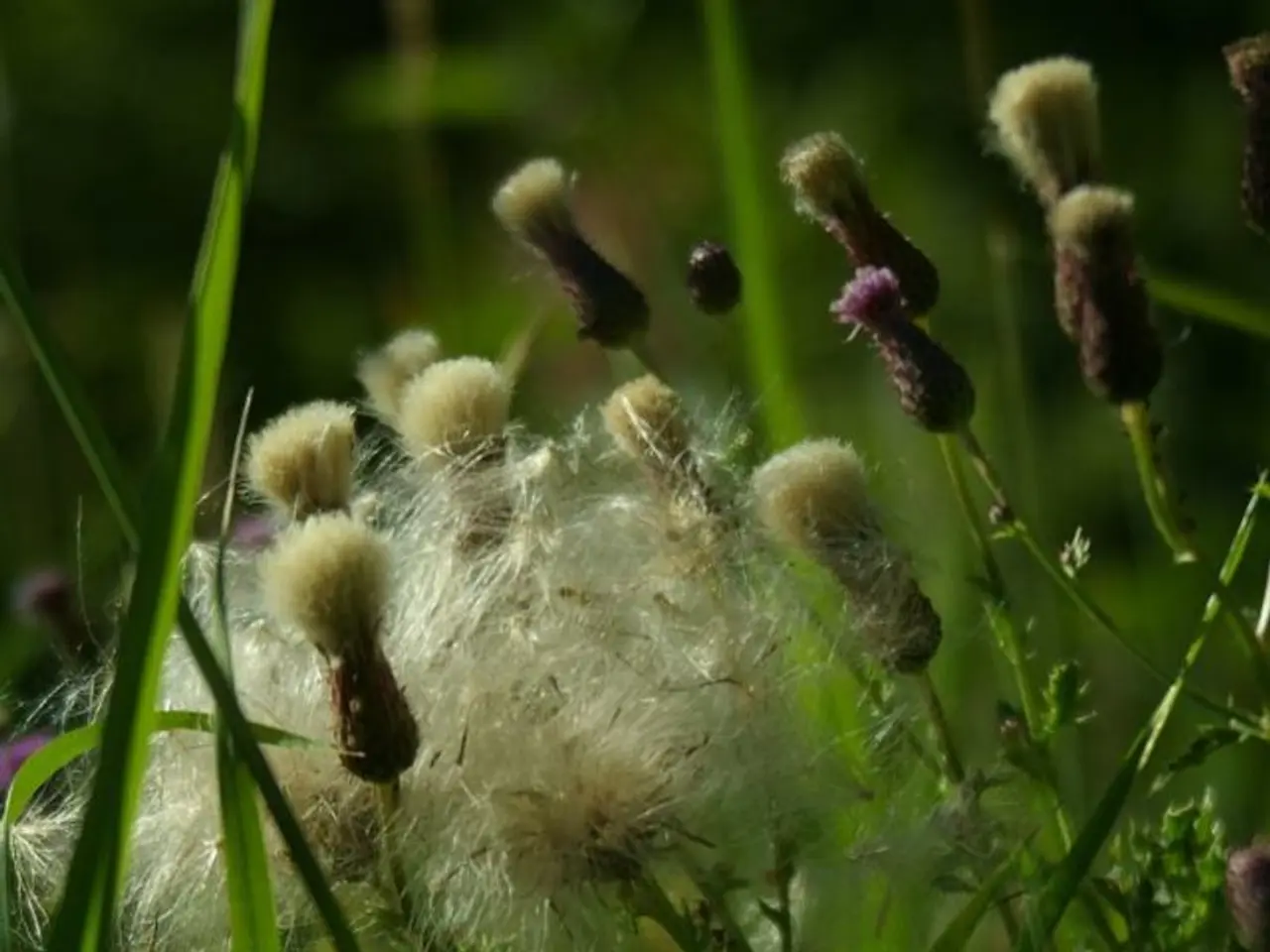Applying Lawn Fertilizer: A Comprehensive Manual
A well-maintained lawn not only enhances the aesthetic appeal of homes but also serves as a space for family gatherings, children's play, and pet roaming. To ensure a green, healthy lawn, it's essential to consider the right fertilizer and the appropriate application time.
Soil testing before fertilization is crucial to avoid a patchy, yellow lawn. Choosing the right fertilizer, whether liquid or dry granular, depends on personal preference and lawn needs. Organic fertilizers, which are more environmentally friendly, provide vital nutrients to the lawn and stimulate microorganisms in the soil to make it healthier.
Applying too much fertilizer can harm the lawn by causing burning, excess growth, and thatch build-up. Fertilizing at the wrong time can lead to frost damage or excessive growth. It is usually best to fertilize before rain is forecasted, but the ideal application method depends on the fertilizer label.
The best time to apply grass fertilizer in the spring depends on your location and weather conditions. Generally, it's recommended to fertilize when the soil temperature reaches about 10°C and the grass starts growing, which is typically late April to early May in Canada. This timing ensures that the grass is actively growing and can effectively absorb the nutrients.
For cool-season grasses, such as Kentucky bluegrass, spring fertilization should include a nitrogen-heavy formula to support growth during the moderate temperatures of spring. Avoid fertilizing during extreme weather conditions, such as intense heat or cold, as this can stress the lawn or be ineffective due to dormancy.
Even application of fertilizer is necessary for an equal distribution of nutrients. Following the directions on the fertilizer package is essential to avoid lawn damage. Fertilizer supplies essential nutrients like nitrogen, phosphorus, and potassium during lawn fertilization.
Using mulched grass clippings can help control excess soil and provide strong roots for the lawn. The optimal time to apply organic fertilizer is from May to September. Excessive fertilizer application can burn the root growth of grass and cause yellow patches.
In conclusion, maintaining a healthy lawn involves careful consideration of the type of fertilizer, application timing, and adherence to the instructions on the fertilizer package. By following these guidelines, homeowners can enjoy a beautiful, vibrant lawn that serves as a perfect setting for family activities and outdoor enjoyment.
[1] Lawn Care Basics: Fertilising Your Lawn. (2021). RHS. Retrieved from https://www.rhs.org.uk/advice/profile?pid=457 [3] Lawn Care 101: Fertilizing Your Lawn. (n.d.). University of California Agriculture and Natural Resources. Retrieved from https://ucanr.edu/sites/lawncare/Lawn_Care_101/Fertilizing_Your_Lawn/ [5] Fertilizing Cool-Season Lawns. (n.d.). University of Illinois Extension. Retrieved from https://web.extension.illinois.edu/cfivt/yardandgarden/fertilizing-cool-season-lawns/
In the realm of home-and-garden care, the smart application of organic fertilizer can enhance the overall health and vitality of your lawn, promoting a lush, green lifestyle. During the optimal season, from May to September, organic fertilizers stimulate microorganisms in the soil, ensuring a healthier home-and-gardening space for family activities and outdoor enjoyment.




